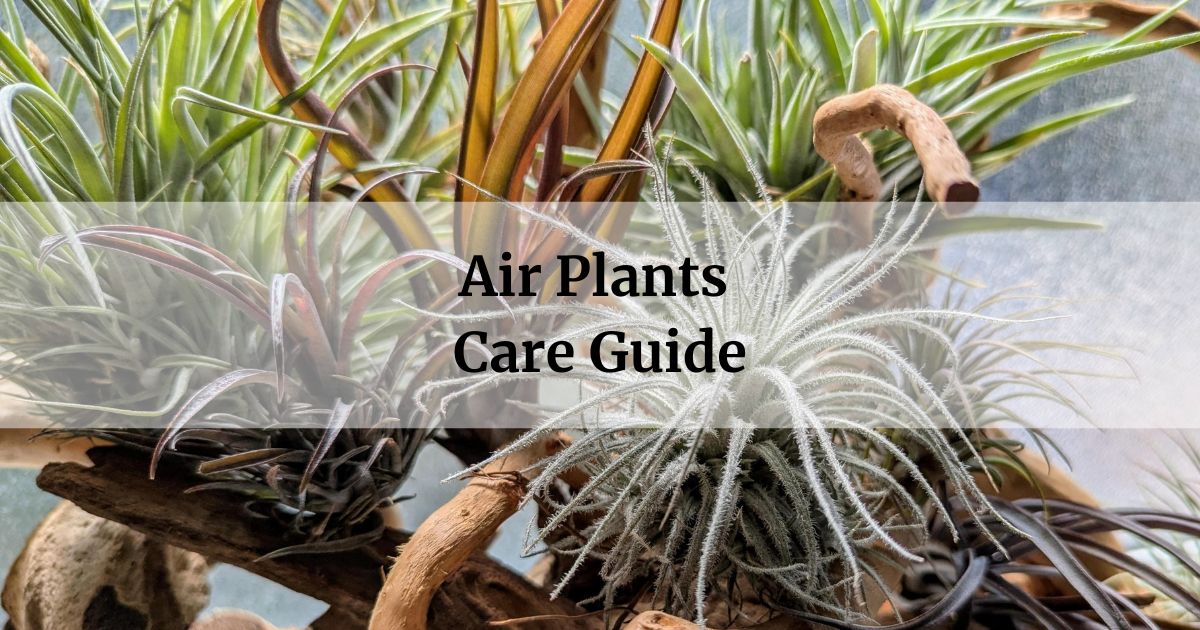
Air plants (Tillandsias) have taken the houseplant world by storm with their low-maintenance allure. Due to their minimal root system they don’t need to be grown in pots of soil. This means Air Plants can instead be hung, mounted or placed in terrariums, bottle gardens or other decorative containers with grit, stones or pretty much anything else you can think of.
- Pros
- No fuss
- Great for renters
- Many varieties
- Cons
- Can dry out quickly if overexposed without humidity
- Can look mesay and unkempt if growth is not managed
In this article
Appearance of Air Plants

There are over 500 different types of air plants (Tillandsia species). Most form tight rosettes of thick, wavy leaves with fuzzy or hairlike texture. The leaves can be rounded, elongated or twisted depending on the species. Some species resemble bouquets of delicate twisted vines while others look like puffy pink or red blooms. Their unusual sculptural shapes that defy gravity add quirky visual interest wherever they are displayed. The wide variety ensures there is an air plant to suit any indoor decorating style from modern to bohemian.
These are the most popular air plant varieties are:
- Red Ionantha: The Tillandsia ionantha ‘Fuego’ is a popular variety known for its vibrant red coloration. It has grass-like leaves that turn a fiery red when exposed to plenty of sunlight. The leaves have a fuzzy, scaly texture and grow in a rosette shape. This air plant is relatively small, typically reaching 2-3 inches in size.
- Tillandsia tenuifolia: An air plant with long, thin, grass-like leaves that can reach up to 12 inches in length. The leaves are a silvery-green color and grow in a spiral rosette pattern. This variety produces small, purple flowers on a short spike. Tenuifolia is native to parts of South America.
- Medusa: The Tillandsia caput-medusae, also known as the “Medusa’s Head” air plant, has unique rounded, snake-like leaves that twist and curl around. The leaves are a light green color and can grow up to 12 inches wide.
- Ionantha Guatemala: The Tillandsia ionantha ‘Guatemala’ is a variety of the popular ionantha air plant. It has spiky, bright green leaves that transition to light pink or red tones, especially when exposed to plenty of sunlight. The plant produces a purple flower spike with yellow blooms.
- Bulbosa: Tillandsia bulbosa is an air plant with a unique bulbous base that stores water. It has long, narrow leaves that can reach up to 12 inches in length. The leaves are a silvery-green color and grow in a spiral rosette pattern. Bulbosa produces small, purple flowers.
Great for People who:
Love having unusual low-maintenance plants that thrive with minimal care. Air plants are perfect for busy lifestyles as they do not require soil or regular watering. Renters and pet owners also enjoy their soilless culture as they do not damage surfaces or create messes.
Great for these Spaces:
Air plants can be displayed virtually anywhere there is adequate humidity and bright, indirect light such as west or east-facing windows. They look great hanging from macrame hangers or mounted curio cabinets. Their flexible sculptural shapes also add visual interest on shower curtains, walls or shelves. Their versatility allows creative placement in any room from bedrooms to living rooms.
Caring for Air Plants
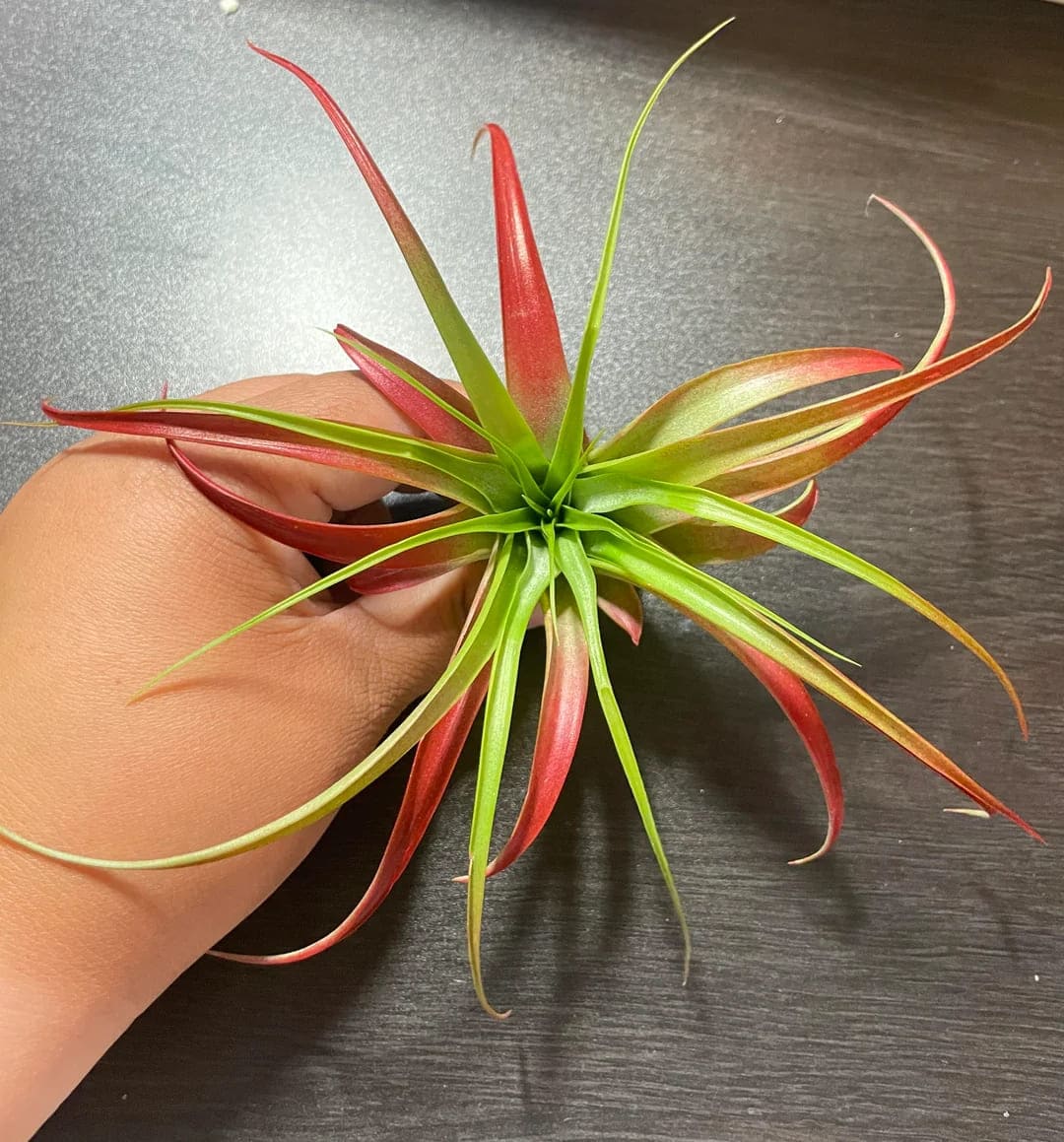
Contrary to their name, air plants can’t live on air alone, they do need a pot and water. I find a simple weekly soak of 10-15 minutes revitalizes them. Keep in indirect light, high places like shelves where they dry quickly. Rotate pots occasionally to expose even drying. Infrequent light watering and adjustment to ambient conditions keeps these beauties thriving with ease.
- Soak 10-15 minutes weekly
- High, well-lit spaces for drying
- Rotate pots occasionally
Toxicity Level of Air Plants
All parts of air plants are non-toxic should a plant be ingested. However, it’s still best to keep them out of reach of children and pets to prevent accidental contact with their often-sharp edges or soap and water during cleaning.
Light Requirements for Air Plants
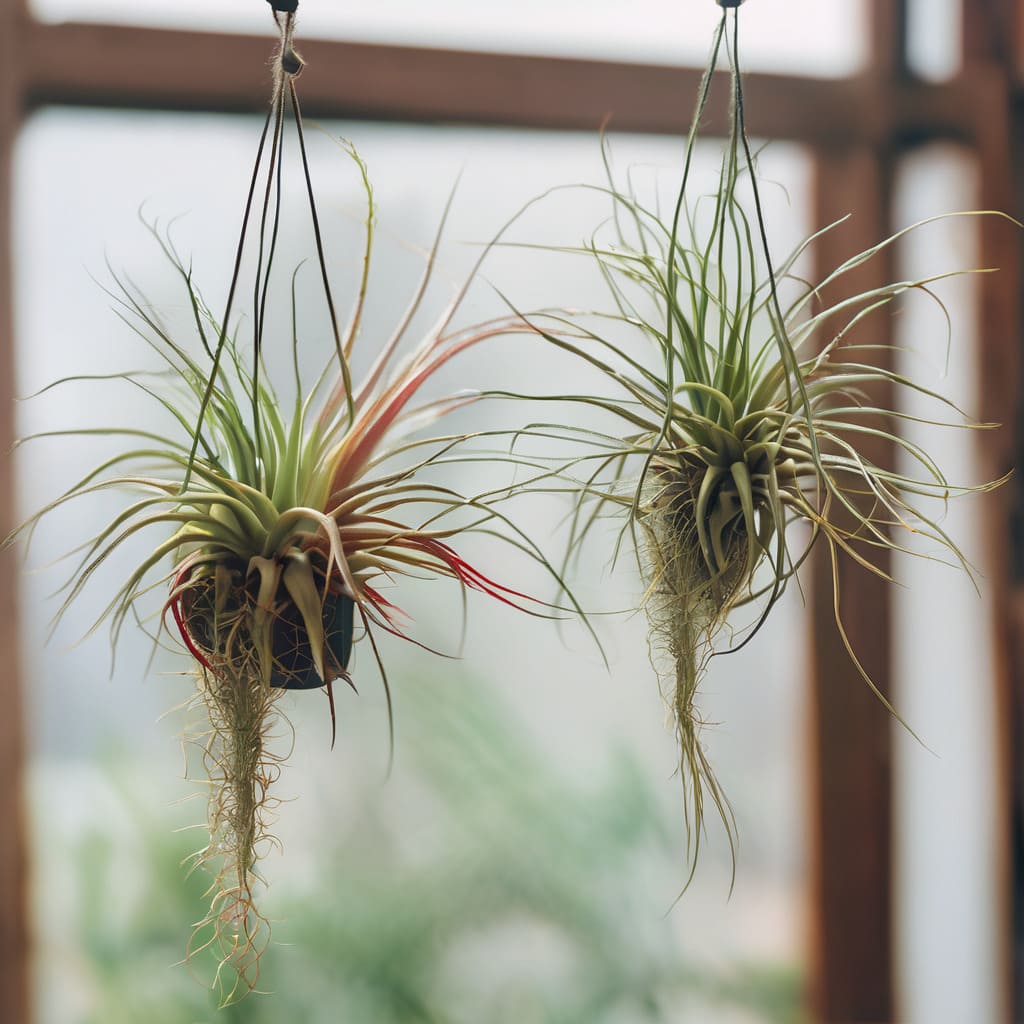
While able to tolerate low-light conditions, air plants love bright spaces. An east or west window receiving 4-6 hours of indirect sunlight daily suits most varieties well. In offices, above sinks, or anywhere with ample natural illumination ensures perky rosettes. Some thriving directly in a south-facing window with adequate drying time in between waterings.
| Light Conditions | Effect on Air Plant |
|---|---|
| Bright Indirect Light | Ideal for compact growth and color |
| Low Light | Will survive but become leggy |
| Direct Sunlight | Risks sunburn if not acclimated; best in very bright shade |
Watering Air Plants
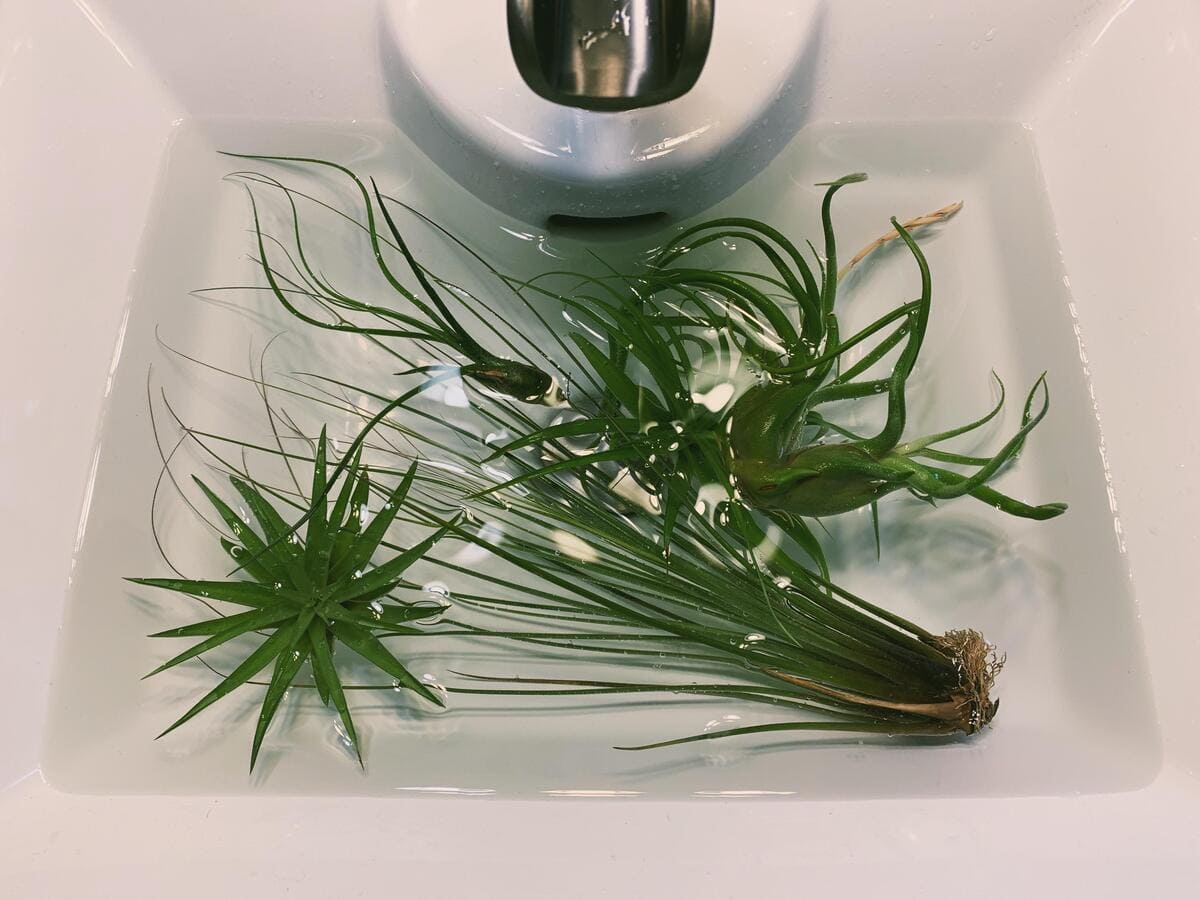
The classic method releasing nutrients stored in thick leaves is weekly soaks. I find 10-15 minutes submerged, then upside-down drying for 24 hours revives my plants. Some spray down leaves and allow total drying. Adjust soaking frequency slightly in very wet or dry indoor climates. Consistency keeps their unique textures plump and vibrant!
- Fully submerge 10-15 minutes weekly
- Invert to dry fully, 24 hours
- Adjust frequency slightly for climate
Fertilizing Air Plants
Air plants rely solely on food retrieved from air and water during infrequent soaks, producing no chlorophyll like potted counterparts. As such, typical fertilizing isn’t necessary. Occasional 1-2 minute soak in diluted liquid fertilizer every 2-4 months supplements needs for growth in low-nutrient environments indoors.
| Season | Soak Frequency |
|---|---|
| Spring/Summer | Dilute solution every 2-4 months |
| Fall/Winter | Less frequent – every 4-6 months |
RELATED: My Top 5 Most Beautiful Houseplants
Mounting Air Plants
With their ability to anchor anywhere, mounting options are endless creativity! I use cork, driftwood branches, ceramic pots, even picture frames. Use zip ties, fishing line or floral wire depending on weight. Consider drainage if in a tray. Rotate occasionally to encourage even growth. Mounts showcase their natural floating charm.
- Use durable material like cork or wood
- Secure with zip ties, fishing line or wire
- Rotate mounts every few months
- Consider drainage for bottom-heavy options
Propagation of Air Plants
Materials Needed:
- Scissors sterilized with rubbing alcohol
- Well-draining propagation medium like sphagnum moss or perlite
- Small glass or container for water propping
- Air plant mounts
Steps:
- Examine the mother plant closely and locate any emergent plantlets, also called pups, growing from the base. The best pups to remove will be at least 1/3 the size of the parent plant.
- Using clean, sterilized scissors, carefully cut the pup off of the mother plant where it connects. Be gentle not to damage the leaves.
- Allow the cut end of the removed pup to callous over for 3-5 days in a dry, well-ventilated area. This helps prevent rot.
- Once calloused, the pup can either be mounted directly onto an air plant display or water propped first to encourage root growth.
- For water propping, place the moistened propagation medium like sphagnum moss in a glass container. Insert the pup halfway down into the medium.
- Keep the medium damp by misting it lightly everyday and check that the pup is not sitting in water. Rooting should take 2-6 weeks.
- Once roots have formed, the pup can be mounted and cared for like the mother plant. Be sure to acclimate it to any lighting or climate differences first.
- Continue removing pups from the mother plant as they appear and repeating these steps to expand your air plant collection over time.
Growth and Development of Air Plants
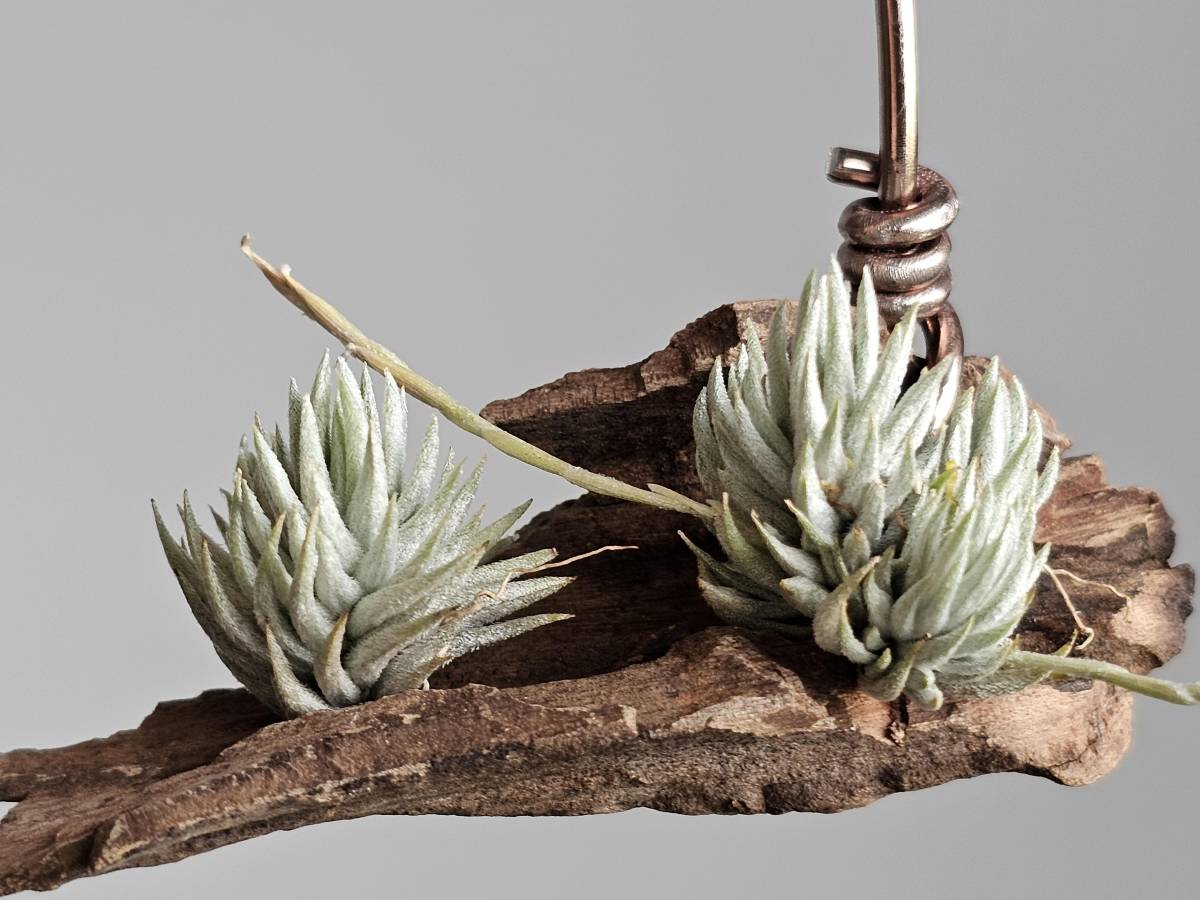
Ideal conditions include temperatures between 65-85°F with moderate humidity levels above 40%. Provide adequate drying time between weekly soaks during active spring/summer growth. Infrequent fertilizing every few months enhances new pup production. Placement in well-lit areas suiting their watering/drying cycle optimizes stress-free growth.
- 65-85°F temperatures
- 40%+ humidity
- Ample light, adjustment to climate
- Fertilize rarely for spring/summer pups
9 things nobody tells you about air plants
- An air plant will not grow in soil. Don’t even try it. In nature air plants grow on other plants—clinging to tree trunks, for instance—rather than by rooting in the ground.
- Air plants use roots to attach themselves to things (rather than to absorb nutrients). You can mount a tillandsia like a trophy to hang on a wall or arrange several together in a single planter suspended from the ceiling.
- Air plants need sunlight like any other plants. Air plants like several hours a day of bright, indirect light.
- Air plants can’t live on air alone. Air plants get nutrition by absorbing water through their leaves. A good rule of thumb is to water an air plant once a week.
- Air plants will tell you when you they need more—or less—water: the tips of its leaves will turn brown and curl) or if you are over-watering it (its leaves may turn brown or start to look soggy). Be careful—if it turns black, that means it’s rotted and beyond saving.
- You’re not the only one having a hard time identifying your Tillandsia varieties. With more than 550 varieties of known air plants, you’d be hard-pressed under any circumstances to keep them straight. Complicating matters, air plant breeders cross varieties so frequently that you are never really going to see two air plants that are identical.
- An air plant may flower—but only once in its lifetime. Depending on the species, these blossoms last from a few days to a few months, and can be a whole variety of beautiful bright colors, like pink, red and purple. Flowering is the peak of the air plant life cycle, but also marks the beginning of the plant’s old age – after it flowers, the plant will eventually die.
- Propagate an air plant by harvesting its “pups.” Just before, during or after flowering, depending on the species, your air plant will reproduce by sending out from two to eight ‘pups’. These baby air plants, which start out very small, will eventually grow into their own mother plants.
- Air plants come from tropical climates and will appreciate warm temperatures in your home. The happiest air plants live in temperatures that range from 50 to 90 degrees Fahrenheit.
Managing Pests and Diseases for Air Plants
Common issues include mealybugs, and rot from overwatering. Isolate any affected plants and spot treat issues promptly. Allow thorough drying and increase air circulation or mount in drier spots if suspecting rot. Periodic checks underneath leaves prevents issues. With simple preventative habits, problems rarely affect these resilient beauties.
Complimentary Plants with your Air Plant
- Other Tillandsia varieties
- Cacti & Succulents
- Orchids
- Ferns
- Bromeliads
Frequently asked questions
How do I prevent air plant pups from falling off?
Gently secure emerging pups to the mother plant using fishing line or thread until roots develop in a few weeks.
Can I plant my air plant in soil?
While some varieties can be soil-planted, most thrive display-only with infrequent soaks. Soil can cause rot.
How long do air plants live?
With proper care, many varieties can survive over 10 years. Expected lifespan ranges 5-15 years depending on species and conditions.
Happy gardening!







